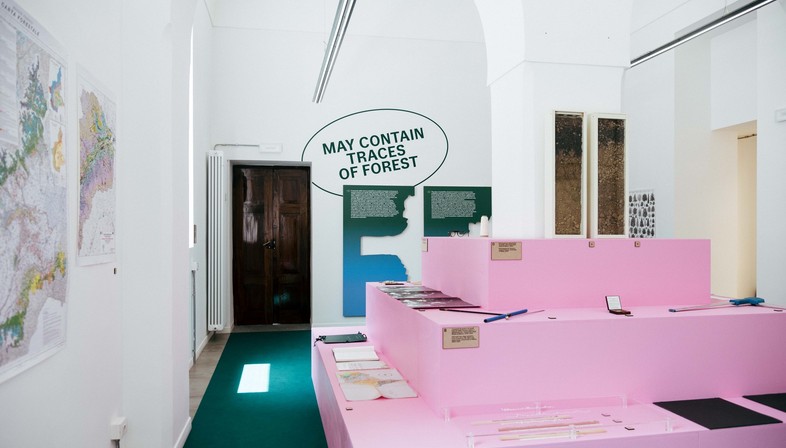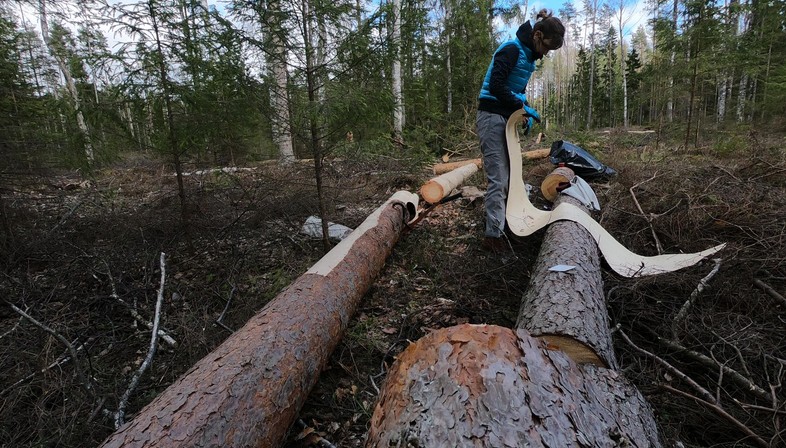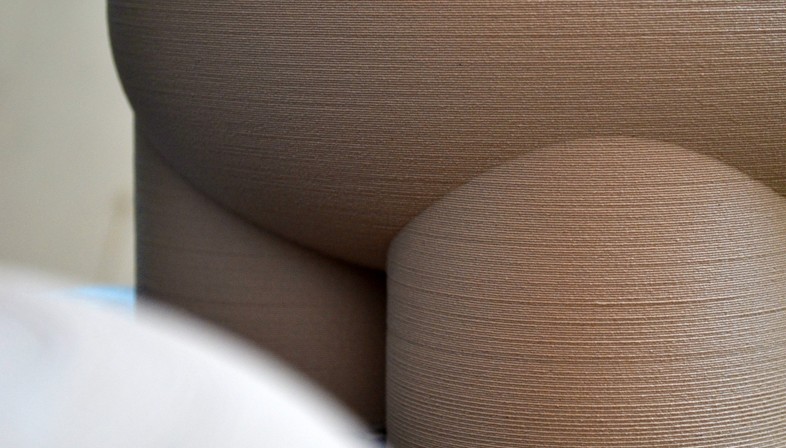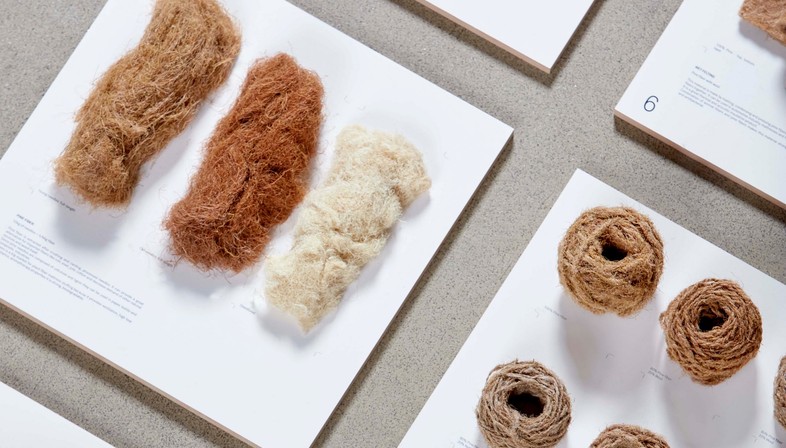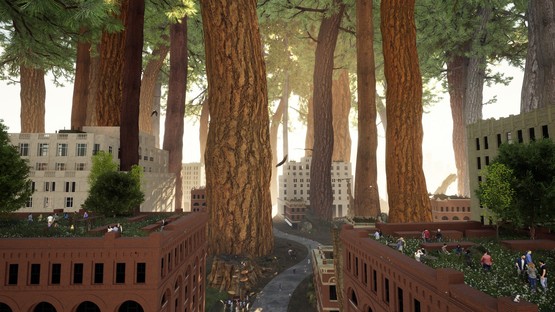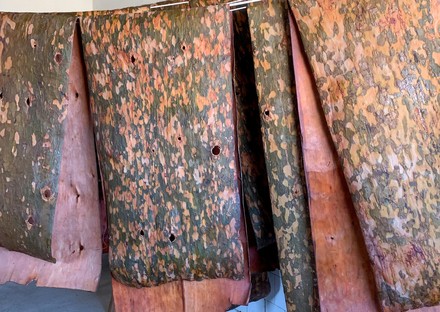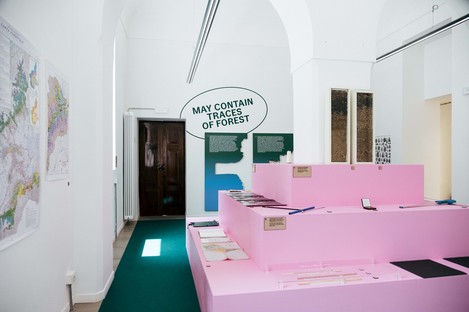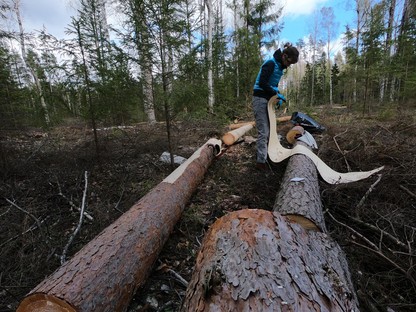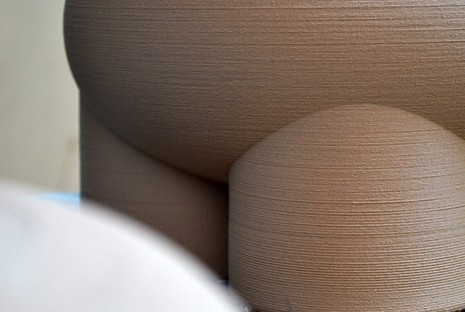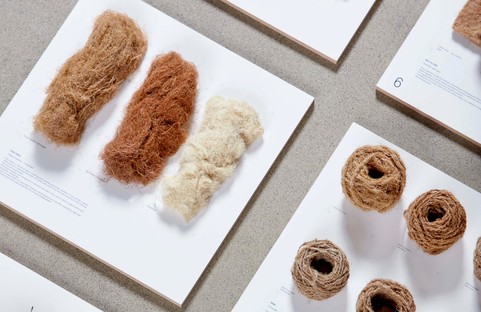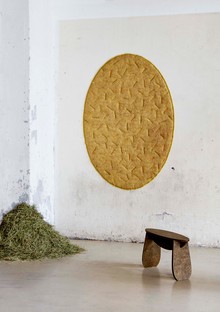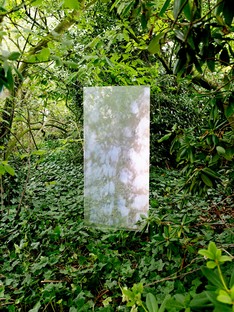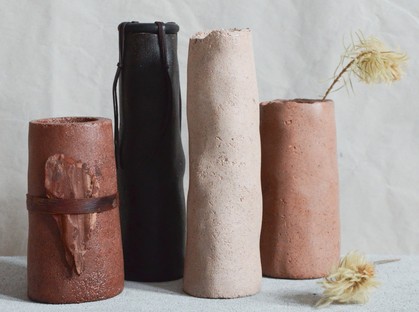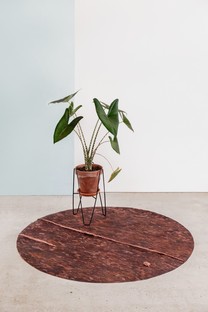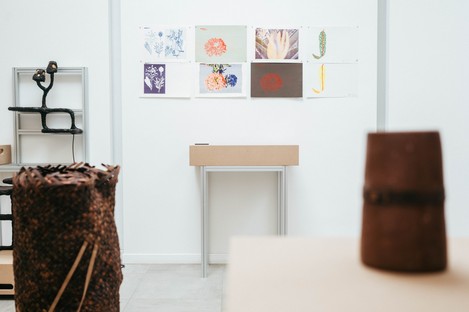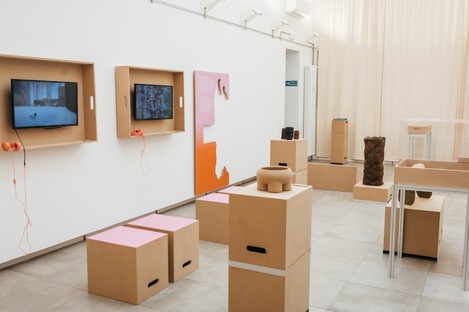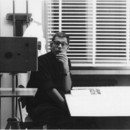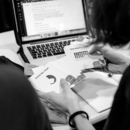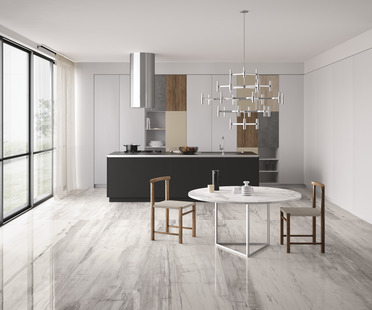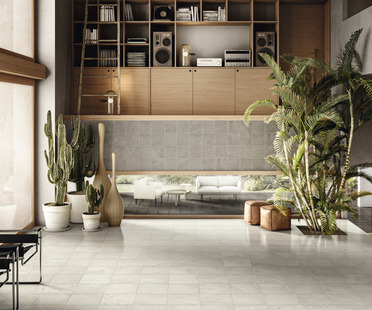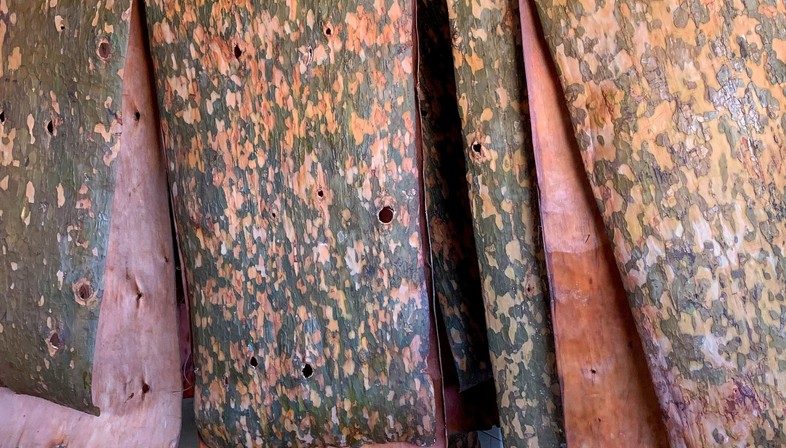
Can trees communicate, see, hear and feel? Yes - but not with the senses we have. They use different receptors, capable of interpreting their environmental conditions and establishing relationships with other living beings. They develop into vast communities, which humankind has learnt to live alongside over the millennia. Now, as a result of changing needs and conditions, this coexistence needs to evolve. The idea of the forest that ‘May Contain Traces of Forest’ is rooted in is certainly not a romantic one; indeed, this impressively scientific exhibition has been produced by the Circolo del Design in Turin and curated by Elisabetta Donati de Conti, a design expert and consultant, and Giorgio Vacchiano, a professor of forest management and planning at the University of Milan. Its aim is to demonstrate how and to what extent our societies depend on forests and woodlands and, more importantly, how this relationship can evolve thanks to research into materials and processes, with a view to making this interdependence (which is currently vastly unbalanced in favour of humans) more fruitful and respectful for man and tree alike. But that’s not all: the Circolo del Design in Turin, housed in the historic Palazzo Costa Carrù della Trinità, also showcases some speculative research to deepen our understanding of these unique green communities, starting with their language and sensations, captured in the form of sounds or images which, whilst fictitious, can help us to identify with a different perspective - the perspective of plants.
“We as humans listen to the forest in order to do something with it,” says Elisabetta Donati de Conti, “and this happens for any number of different reasons: to find water or air, to protect the land, or even to produce raw materials. In Italy, for example, the furniture supply chain works extensively with wood: it’s a very widely-used resource, but it’s rare for the cultural side of the consumer to kick into gear and associate these different aspects. We are largely unaware that so many things we produce come from there: paper, essential oils, perfumes, the celluloid used for glasses, viscose fabrics. All products that come from forests, with a very deep connection with an ecosystem that we are all too accustomed to interpreting through a romanticised lens.” To demonstrate this, the first part of the exhibition showcases a selection of products derived from the processing of the Pinaceae family, beyond merely the wood with its characteristic grain: essential oils, soaps, sweets, incense, paper and cardboard, pellets, pencils, viscose, glasses and more. It then goes on to present materials and tools for research and land use planning, offering an insight into how we can read and interpret a domain which - as a complex system made up of countless different species of plants, animals, fungi and bacteria - is governed by laws and criteria that are worlds away from those of our anthropocentric systems.
“In the second part, the exhibition prompts us to reconsider what we think of as reworked materials,” continues Donati de Conti, “by presenting experimental products and prototypes made from byproducts of the tree ecosystem. Research that offers a springboard for further reflection.” Such as PineSkins, developed by Studio Sarmite, founded by Latvian designer Sarmite Polakova: it is a leather-like material created by processing the bark of pine trees, a byproduct which usually has no commercial use whatsoever. Once softened with a bio-solution and enriched with coloured pigments and natural wax, the bark is used to create a rug and a woven basket. Milanese duo CARA DAVIDE, meanwhile, has designed a material containing wood powder and a synthetic binder, which they have then used to 3D print Fucina, a sculptural vase which showcases the incredible potential and characteristics of this novel compound. But there is also Tamara Orjola with her Forest Wool, a fibre obtained by processing pine needles (20-30% of the total mass of material extracted from forests, previously discarded) to transform them into a form of felt, which she has used to produce a stool.
The most striking part of the exhibition covers the work geared towards providing a deeper understanding of the forest as an entity, complete with all its inhabitants. “Rather than offering a different perspective, this research offers entirely new ways of understanding the tree system,” comments Donati de Conti, “including more empathetic approaches to relating to and identifying with it. Photographer Alessandro Ruzzier tried to imprint the chemical or electromagnetic exchanges between plants on film buried in the dark beneath the forest floor; Karolina Metrak attempted to translate what are potentially conversations between trees into sounds. Angelo Renna and Oleksandr Nenenko conjured up a vision of planet Earth covered by gigantic trees, with human civilisation developing in their midst.” A dream that we would like to see come true in our lifetime.
Antonella Galli
‘May Contain Traces of Forest’
Curated by Giorgio Vacchiano and Elisabetta Donati de Conti
Circolo del Design
Via San Francesco da Paola 17
Turin
Until 15 December 2023
The exhibition is part of a wider project entitled ‘Earthrise 23 - Design for a Living Planet’, which has explored the relationship between forests and society, embracing all manner of visions, proposals and research projects from the worlds of design, science and culture.
Captions
The images depict the projects selected for inclusion in the exhibition and display at the Circolo del Design in Turin.
01 Angelo Renna and Oleksandr Nenenko: still from the video ‘The Word for World is Forest’, which offers a vision of a world in which trees and human beings coexist in a symbiotic relationship that redesigns the landscape we live in.
02 and 04 Studio Sarmite: material research for ‘PineSkins’, showing the stages of processing required to transform pine bark into a leather-like material.
03 Setup of the exhibition
05 CARA DAVIDE: 3D-printed sculptural vase made from a material combining wood powder with a synthetic binder.
06 and 07 Tamara Orjola: processing samples of ‘Forest Wool’ fibres made from pine needles, along with a stool made from the material.
08 Karolina Metrak: still from the video that is part of the ‘Un-muting’ research project, which aims to understand how trees communicate, with a view to developing collaborative survival strategies.
09 Studio Sarmite: ‘PineResin’, vases made from pine resin, sawdust, bark, cellulose and pigments
10 Studio Sarmite: ‘PineSkins’, rug and woven basket made from pine bark.
11 and 12 Setup of the exhibition










